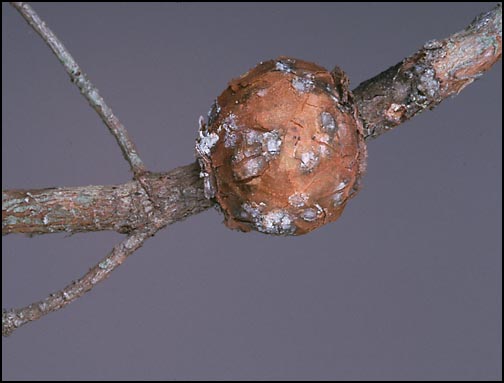Galls
Natural History

Gall on the branch of a tree | Photo credit: Larry Kohrnak, SFRC
Galls are abnormal growths in shrubs and trees, and can be found on nearly every part of the plant: leaves, roots, stems, trunks, buds, flowers, seeds, and fruits. Galls can be caused by a variety of organisms including bacteria, fungi, nematodes, and mites. The most common cause of galls is insects. Although these galls may be considered unsightly, they are rarely harmful to the plant, and are usually helpful to the insect.
A complex relationship exists between the insects that cause the galls and the plants that bear the galls. The insect will lay eggs in a plant and at the same time release a chemical or other stimulus into the plant. The plant responds with its own release of growth hormone, leading to abnormal growth around the eggs that becomes a gall. Feeding damage and other insect secretions can cause the same result. The gall is made of protein-rich tissue and is strong in structure - providing food and protection for the developing insects. Once a gall begins to form, nothing can stop its growth.
More than 2,000 types of galls are produced by insects, and the majority of these are made by wasps or tiny flies.
